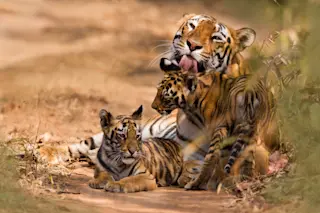This article was originally published on August 11, 2022.
The International Union for Conservation of Nature (IUCN) Red List is perhaps the world’s best running tally of the conservation status of living organisms on our planet. Of the 147,517 species, 28 percent are on the list as threatened with extinction. As climate change continues to decrease global biodiversity, that percentage grows.
Last month, the IUCN released an update that added new species to the list and reassessed others. Of the reassessed species, 96 experienced “genuine” changes in their conservation status. Ecological factors drove these changes, rather than an increase in available data. Of these organisms, 87 became scarce.
“Climate change is emerging as quite an important threat,” says head of the IUCN Red List Craig Hilton-Taylor. “We knew it was coming — we saw it all around us. But it has taken a while for the scientists working on the ...















